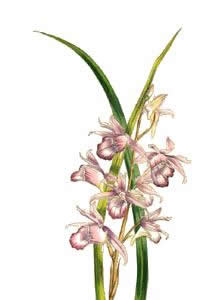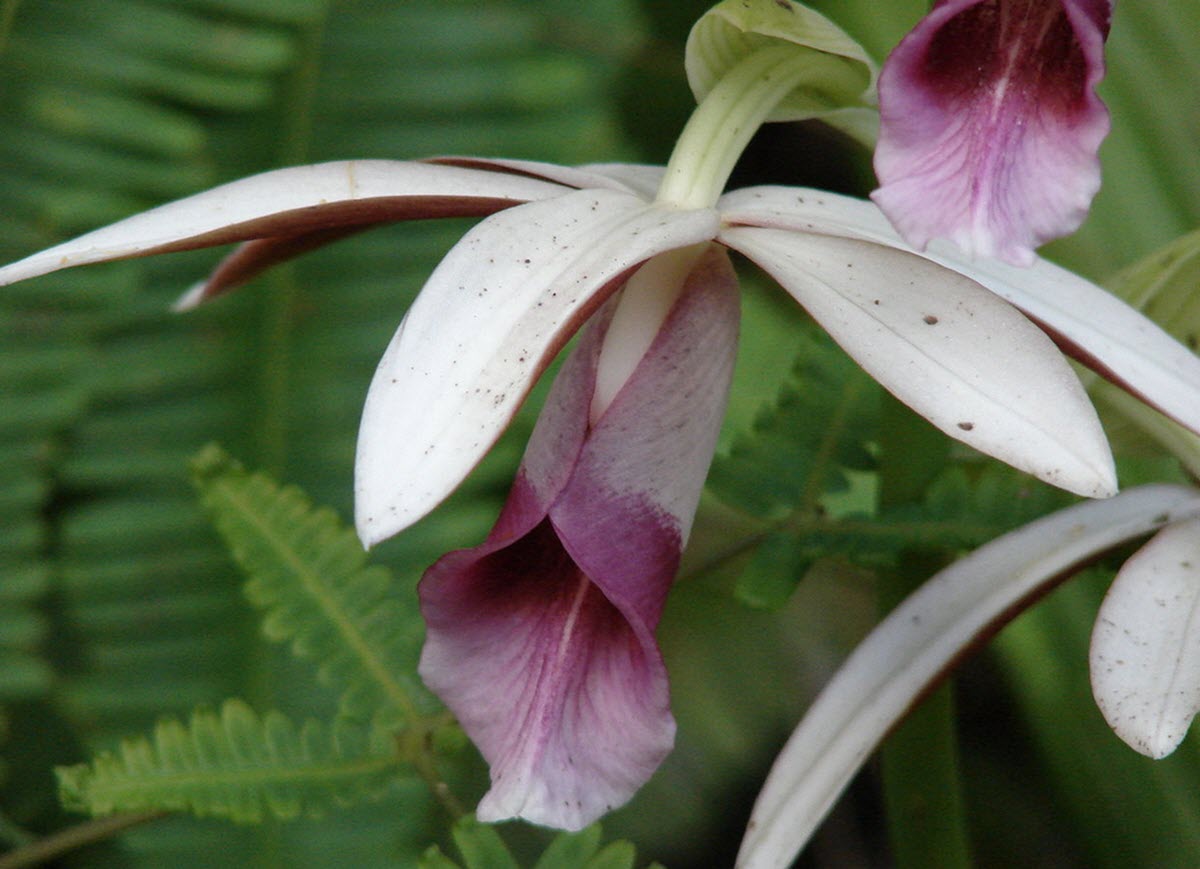Phaius Orchid Care
Contents
The members of the Phaius genus are large orchids that produce tall spikes with showy flowers. These orchids are mostly terrestrial and can be found in Asia, Australia and Africa, including China, Japan and Madagascar. In 1778 the first Phaius orchid was imported from China to Europe. This species is today named Phaius tankervilliae, but used to be known as Phaius gradnifolius. In the floral trade it is commonly sold as Veiled Orchid and Nun’s Orchid.

Phaius orchid
One of the key elements of proper Phaius orchid care is to provide them with supreme air circulation year round. Adequate air circulation will prevent a long row of problems for the orchid keeper. Be especially vigilant during the blooming period since this is when a fungus named botrytis can attack the orchid.
Watering
Keeping Phaius orchids evenly moist year round, except when new growth has matured, is an essential part of good Phaius orchid care. When new growth has matured the orchid should be left to dry out for 3 to 4 weeks. Never water directly on the foliage of your Phaius; keep the substrate moist by watering directly into the pot. Water your Phaius orchid in the morning so that there is plenty of time for any spilled water to evaporate from the foliage before sunset.
Nutrients
Phaius orchids are heavy feeders that need ample amounts of nutrients to thrive. Organic fertilizers such as manure teas and fish emulsions are used by many dedicated growers since they are known to be appreciated by the Phaius orchids. If you prefer to use an ordinary salt based fertilizer, a balanced (i.e. 20-20-20) fertilizer should be used for general growth and maintenance. Fertilize every other watering during the warm season.
Temperature
The ideal temperature range for Phaius orchids is 60-75 degrees F (16-24 degrees C) night and day. A well established and healthy Phaius orchid will however normally tolerate temperatures down to 40 degrees F (10 degrees C) and up to 95 degrees F (32 degrees C) as long as it is not subjected to prolonged exposure. Improper temperatures can however hamper growth and should be avoided as much as possible.
Light
The Phaius orchid thrives in bright light to light shade. If the leaves become dark green, your orchid is probably not getting enough light. If the leaves become yellow, your plant might have been exposed to sunlight that is a bit to harsh for it. The leaves are extra susceptible to sunburn if the Phaius orchid is suddenly moved form a shaded spot to a brighter location. Bright lighting should therefore be introduced gradually.

Phaius tankarvilleae: Picture by Forest & Kim Starr
Potting medium
A majority of the species in the genus Phaius are terrestrial, which means that they are used to growing in the ground. The potting medium should however still be well draining since a soggy medium can cause root destruction. You can for instance mix one part ordinary houseplant potting mix with one part seedling bark and one part well-rotted cow or horse manure. Another popular combination is one part fir bark or lava rock, one part shredded sphagnum moss, one part cow manure, and one part potting soil.
Repotting a Phaius orchid
Phaius orchids should not be frequently repotted; every two or three years is well enough. The best time to repot a Phaius orchid is right after flowering. In order to promote flowering the common year you can split clumps of pseudobulbs into small groups consisting of 3-4 pseudobulbs.
Phaius orchid tips!
Phaius tip # 1: The leaves of a Phaius orchid are very sensitive to cold water. Always use room temperate water.
Phaius tip # 2: When watering, be careful when you move the nozzle around. Even fairly normal handling can be enough to bruise the soft leaves of a Phaius orchid.
Phaius tip # 3: Do not move your Phaius orchid while the inflorescences are developing since this can interfere with the development.